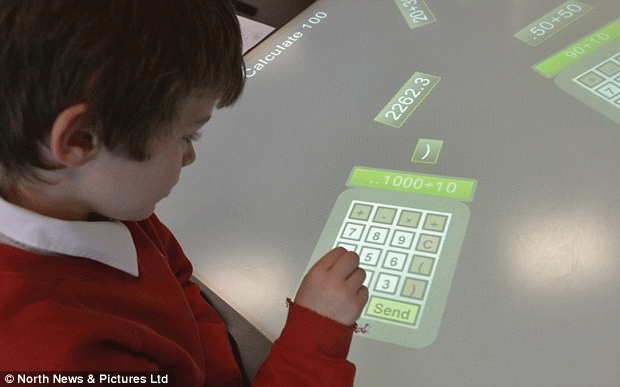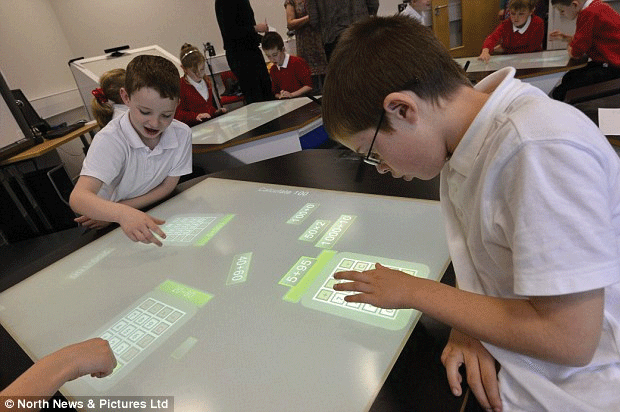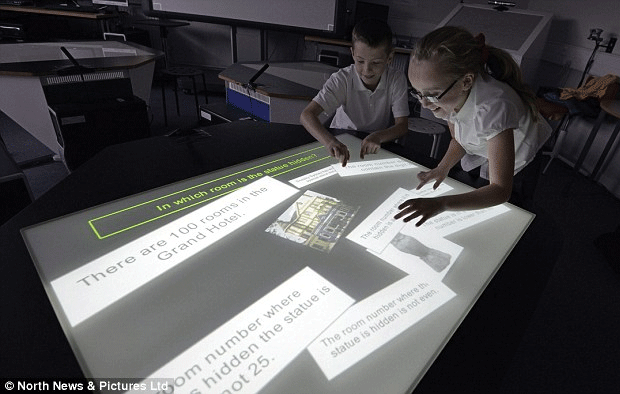|
Researchers are designing new interactive multi-touch
'smart' desk classrooms which have been found to boost pupils'
mathematical skills. Using multi-user desks in the the "classroom of the
future" the children were able to work together in new ways to solve
questions and problems using inventive solutions.
Results from a 3-year project by the Durham University who worked with
over 400 pupils, mostly 8-10 year olds, show that collaborative learning
increases both fluency and flexibility in math.
|
|
 |
|
It also shows that using an interactive 'smart' desk can have benefits
over doing mathematics on paper. The 'Star Trek classroom' could also
help learning and teaching in other subjects.
Seeing what your friends are doing, and being able to fully participate
in group activities, offers new ways of working in class, the
researchers say. The findings published in the journal Learning and
Instruction, show that children using these SynergyNet classrooms
improve in both mathematical flexibility and fluency, while children
working on traditional paper-based activities only improve in
flexibility.
|
|

|
|
Researchers found that 45% of students who used the desks increased in
the number of unique mathematical expressions they created, compared to
16% in the traditional paper-based activity.
"Our aim was to encourage far higher levels of active student
engagement, where knowledge is obtained by sharing, problem-solving and
creating, rather than by passive listening. This classroom enables both
active engagement and equal access," lead researcher, Liz Burd, said.
|
|

|
|
"We found our tables encouraged students to collaborate more
effectively. We were delighted to observe groups of students enhancing
others' understanding of mathematical concepts. Such collaboration just
did not happen when students used paper-based approaches," said Burd.
Researchers designed software and desks that recognize multiple touches
on the desktop using vision systems that see infrared light.
|
|
 |